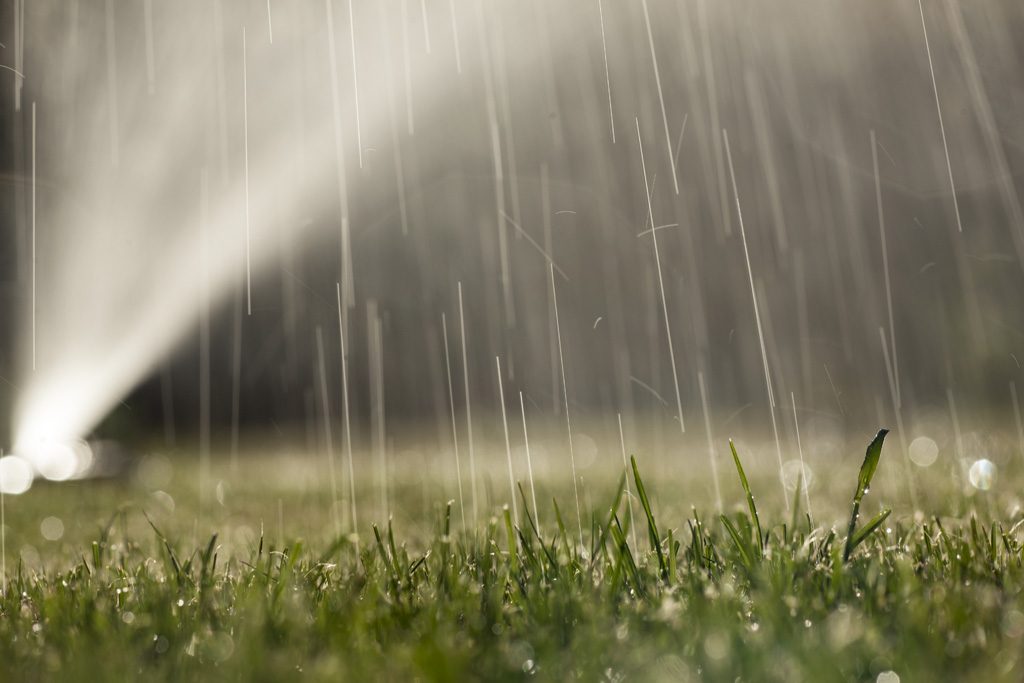In 1990, 30 states in the US reported ‘water-stress’ conditions. In 2000, the number of states reporting water-stress rose to 40. In 2009, the number rose to 45 & Now there is a worsening trend in water supply nationwide. Taking measures at home to conserve water not only saves you money, it also is of benefit to the greater community. It should be noted that installing low-flow aerators, showerheads, tank banks and other water-saving devices usually is a very simple operation which can be done by the homeowner and does not even require the use of tools. Water conservation at home is one of the easiest measures to put in place, and saving water should become part of everday family practice.
1. Plant drought-resistant lawns, shrubs and plants
If you are planting a new lawn, or overseeding an existing lawn, use drought-resistant grasses such as the new”Eco-Lawn”.
Many beautiful shrubs and plants thrive with far less watering than other species. Replace herbaceous perennial borders with native plants. Native plants will use less water and be more resistant to local plant diseases. Consider applying the principles of xeriscape for a low-maintenance, drought resistant yard.
Plant slopes with plants that will retain water and help reduce runoff.
Group plants according to their watering needs.
2. Put a layer of mulch around trees and plants
Mulch will slow evaporation of moisture while discouraging weed growth. Adding 2 – 4 inches of organic material such as compost or bark mulch will increase the ability of the soil to retain moisture. Press the mulch down around the dripline of each plant to form a slight depression which will prevent or minimize water runoff.
For information about different mulch materials and their best use, click here.
3. Don’t water the gutter
Position your sprinklers so water lands on the lawn or garden, not on paved areas. Also, avoid watering on windy days.
4. Water your lawn only when it needs it
A good way to see if your lawn needs watering is to step on the grass. If it springs back up when you move, it doesn’t need water. If it stays flat, the lawn is ready for watering. Letting the grass grow taller (to 3″) will also promote water retention in the soil.
Most lawns only need about 1″ of water each week. During dry spells, you can stop watering altogether and the lawn will go brown and dormant. Once cooler weather arrives, the morning dew and rainfall will bring the lawn back to its usual vigor. This may result in a brown summer lawn, but it saves a lot of water.
5. Deep-soak your lawn
When watering the lawn, do it long enough for the moisture to soak down to the roots where it will do the most good. A light sprinkling can evaporate quickly and tends to encourage shallow root systems. Put an empty tuna can on your lawn – when it’s full, you’ve watered about the right amount. Visit our natural lawn care page for more information.
6. Water during the early parts of the day; avoid watering when it’s windy
Early morning is generally better than dusk since it helps prevent the growth of fungus. Early watering, and late watering, also reduce water loss to evaporation. Watering early in the day is also the best defence against slugs and other garden pests. Try not to water when it’s windy – wind can blow sprinklers off target and speed evaporation.
7. Add organic matter and use efficient watering systems for shrubs, flower beds and lawns
Adding organic material to your soil will help increase its absorption and water retention. Areas which are already planted can be ‘top dressed’ with compost or organic matter.
You can greatly reduce the amount of water used for shrubs, beds and lawns by:
– the strategic placement of soaker hoses
– installing a rain barrel water catchment system
– installing a simple drip-irrigation system
Avoid over-watering plants and shrubs, as this can actually diminish plant health and cause yellowing of the leaves.
When hand watering, use a variable spray nozzle for targeted watering.
8. Don’t run the hose while washing your car
Clean the car using a pail of soapy water. Use the hose only for rinsing – this simple practice can save as much as 150 gallons when washing a car. Use a spray nozzle when rinsing for more efficient use of water. Better yet, use awaterless car washing system; there are several brands, such as EcoTouch, which are now on the market.
9. Use a broom, not a hose, to clean driveways and sidewalks
10. Check for leaks in pipes, hoses, faucets and couplings
Leaks outside the house may not seem as bad since they’re not as visible. But they can be just as wasteful as leaks indoors. Check frequently to keep them drip-free. Use hose washers at spigots and hose connections to eliminate leaks.
Water conservation comes naturally when everyone in the family is aware of its importance, and parents take the time to teach children some of the simple water-saving methods around the home which can make a big difference.

